If you have been away for a while over the summer and have returned to a lawn that looks more like a meadow, don’t worry. We have all been there. Sometimes, it does not even take a month off to deal with something like this.
Occasionally, just a week’s worth of rain will transform your lawn into the Amazon in no time. But, whatever the case, we’ll explain how to quickly and efficiently trim it and what tools to use for the best results.
When grass gets too long, mower blades might rip it instead of cutting it, which is bad for the lawn.
Lawn gets out of control
Allowing your lawn to get out of control is much simpler than you would think. You turn your back for a moment, and then your recently mowed grass has magically transformed into a thicket.
But don’t fret; you’re not alone. This is a problem that bothers even the best gardeners. If the conditions are right, your lawn could grow so much in a week that you will struggle to mow it.
Mowing grass that is very long takes extra time and effort. And, while it may be tempting to go full throttle, to ensure a healthy lawn, you will need to trim very tall grass at a slower speed.
Also, before mowing tall grass, it should be cut with a string trimmer or brush cutter to a more manageable height. Then, give the grass a few days to recover. When the grass is in the proper height, you can use the highest cutting setting on your mower to mow your lawn.
RELATED: Lawn Mowing Pattern & Techniques | Cut Your Grass Like A Pro
With that in mind, we have put together this article to help you in gathering information on how to deal with the overgrowing lawns.
Care Is Better Than Cure!
Mow the grass the day before you go on vacation if you won’t be back for a week or two.
Let’s get one thing out of the way before we go into the specifics of how to trim grass that is really long. Wouldn’t it be better if you could find a way to prevent getting into this scenario in the first place? Therefore, if you are about to go on vacation and won’t come back for a week or two, you should mow the grass the day before you depart.
RELATED: Lawn Mower Height Settings | What’s The Best Mowing Height For Lawn Grass?
You don’t want to return home and face the demanding task of mowing your backyard’s long grass. Moreover, the only thing necessary to keep your lawn from becoming unmanageable is to establish a routine of cutting it at regular intervals.
So, don’t forget to set a reminder for the mowing the next time you schedule a doctor’s appointment or a party on your phone’s calendar.
Best Tools For Cutting Extremely Long Grass
Well, the answer to that relies completely on how you like to mow your lawn. For instance, would you like to work on this manually, or would you rather have something more straightforward? The following is a list of some of the most effective tools for the job:
Grass Scythe
Wet or long grass will not bog down a scythe, but it will stop a lawn mower in its tracks.
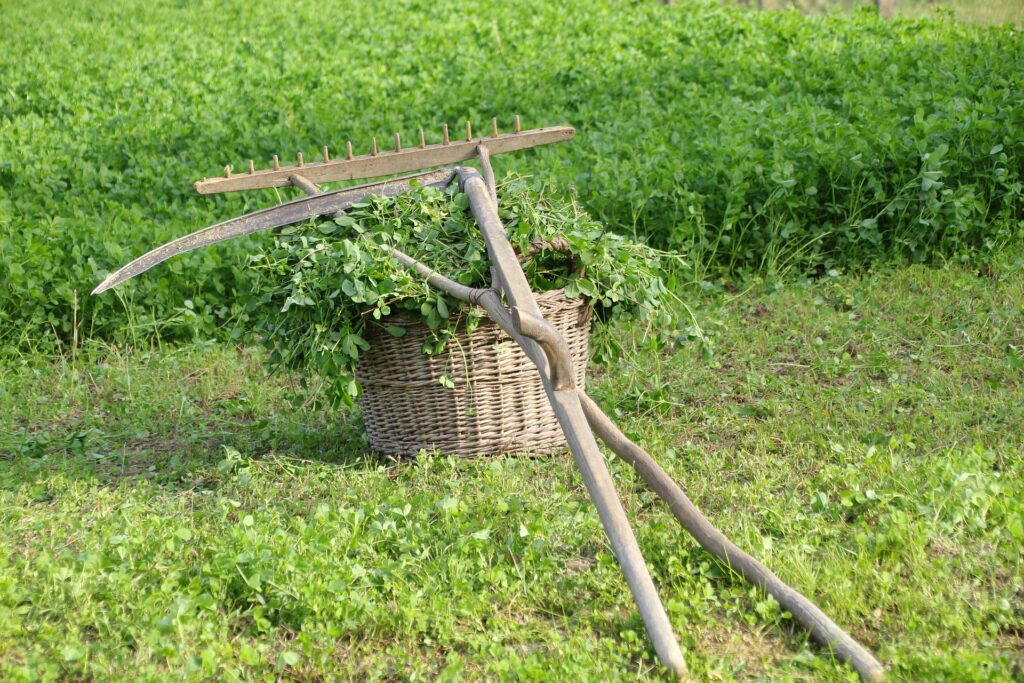
As our first example, we’ll take a look at a tool that’s frequently used for trimming long grass. It is a two-hand tool that has a shaft made of metal or wood and measures approximately 6 feet in length. The shaft can either be straight or have an S curve.
How To Use A Grass Scythe?
The length of the handle on the scythe can be altered, and the size of the blade can range anywhere from two to four feet in length.
The only drawback to utilizing them is that they take a little bit more time to use, but they provide a clean cut in return.
Scythes are excellent for cutting very tall grass, even grass that is up to one meter (about three feet) in height. Scythes, however, are only helpful in the hands of those who have a great deal of experience wielding them. Therefore, if you do not have any prior experience, you should probably just use the shears instead.
Nevertheless, if you have decided to use a scythe, you first need to ensure that you are standing in a comfortable position while holding the handle of the scythe in your hand.
Then, all you need to do is move the blade back and forth and, to maximize productivity, hold the blade so that its edge is perpendicular to the floor.
A Sickle
A sickle has a hardwood handle and a precision-edged stainless steel blade for weeding and cutting tall grasses.
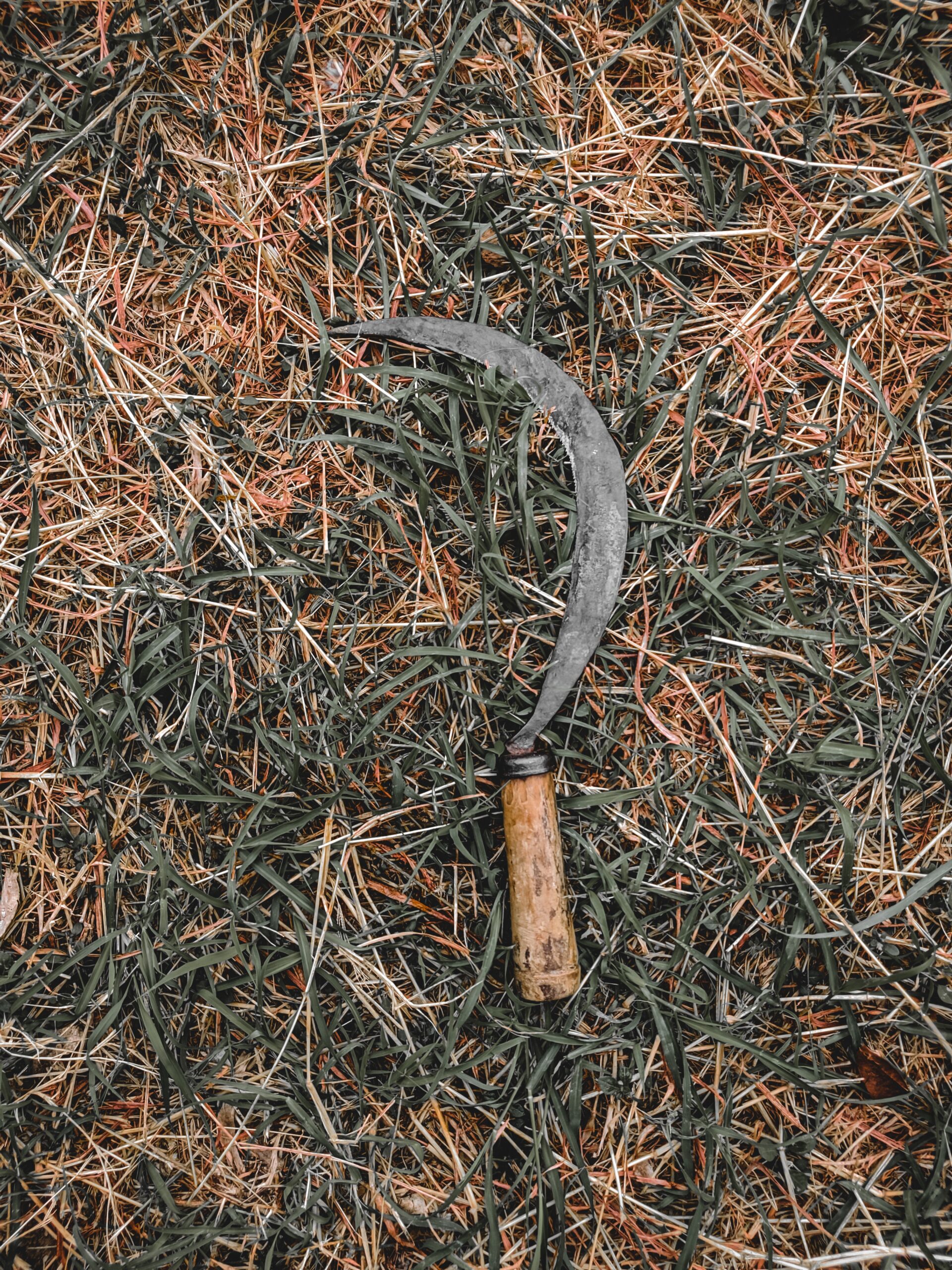
These tools are intended to be used with a single hand. They are extremely sharp tools that are perfect for trimming long or wet grass because of their length and sharpness.
A sickle is equally lightweight and easy to transport, but it is mainly used for trimming tiny bits of grass. You can quickly eliminate overgrown grass with each slash, even if it’s up to a meter tall!
How To Use A Sickle?
When clearing grass and weeds close to the ground with a sickle, the motions should be quick and sweeping, as if you were trying to skim a pebble across the surface of a body of water.
You can also get rid of branches by chopping downward from the top of the branch. However, when clearing away cuttings, you should not use your sickle.
Instead, it would help if you used a stick with a hook or a weeding sickle, a straight stick with a little blade fixed at a 90-degree angle on the end of it.
Weed Eaters Or Trimmers
A weed eater is an excellent tool for trimming long grass and getting into hard-to-reach places.
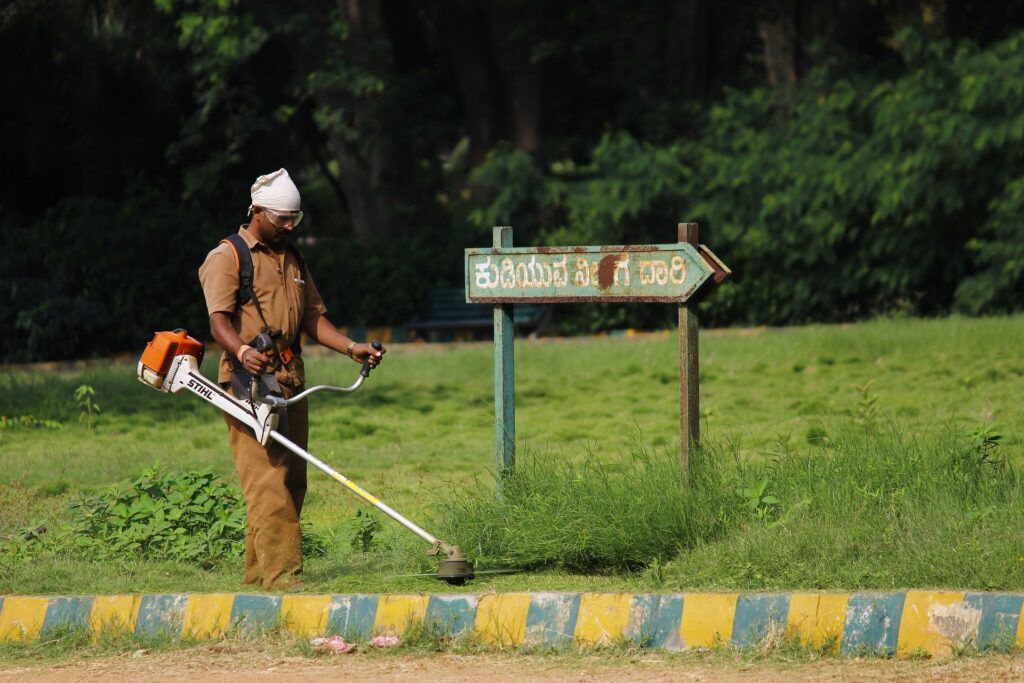
For the common man, weed eaters are standard gardening tools. Using a weed eater doesn’t require much skill. Also, if your lawn is too overgrown, I recommend investing in an electric or gas weed wacker, which has greater potential than a battery-powered one.
Weed eaters make short work of tall grass and are ideal for removing thickets of weeds and brush. Once you’ve mastered how to operate a weed eater, you’ll be able to keep your grass looking neat and tidy, avoiding the unkempt appearance that comes with neglect.
How To Use A Weed Eater?
If you know how to use it, you may use your weed eater for various tasks around the yard, including trimming hard-to-reach locations and tidying up the lawn. To begin, start the weed eater and place it on the ground while holding it as near the ground as possible.
RELATED: What To Do With Grass Clippings | 10 Smart Ways To Recycle Grass Clippings
Move the device back and forth and side-to-side while you trim the grass and weeds. Keep cutting the grass in front of you, but avoid putting too much force on the weed whacker. The weed eater should be held at hip level with the attachment splayed out in a horizontal plane.
After you’ve finished removing the weeds and grass from your garden that you didn’t want, let up on the throttle for a few seconds and then power down the device.
Lawn Mower
When mowing tall grass, keeping your blade at its usual cutting height is preferable.
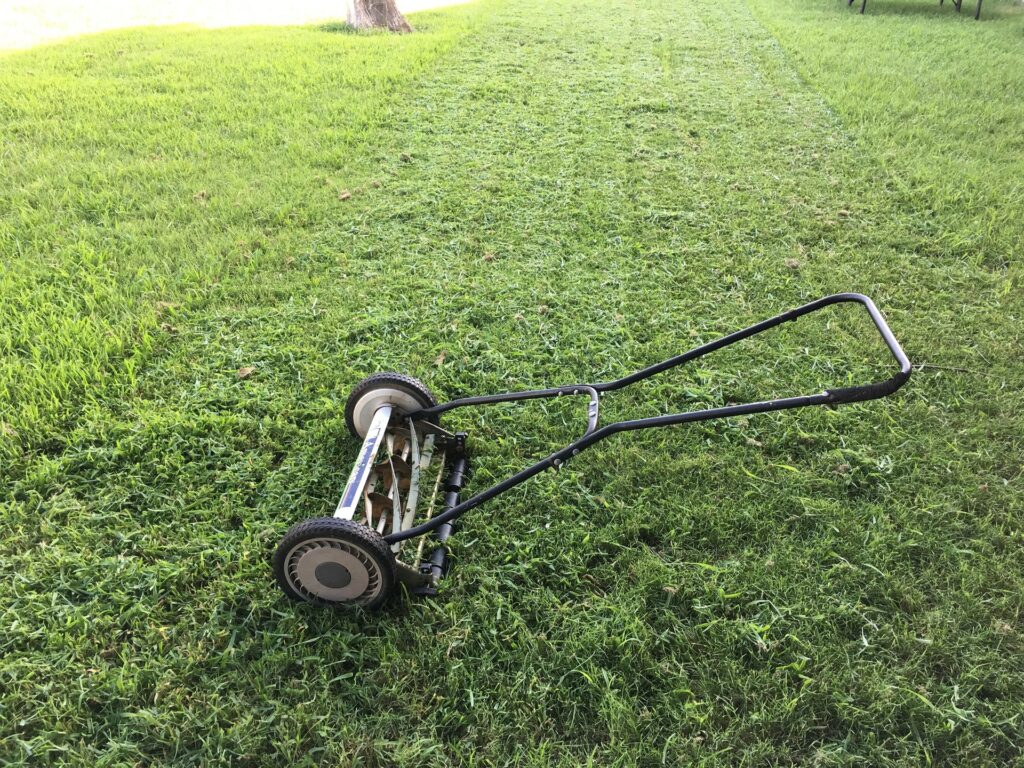
You can also use a lawn mower to cut tall grass in your yard. If your lawn is really large, though, you should go with a gas-powered mower. When using an electric lawnmower, remember that the cable length limits how large your yard may be.
It is also recommended to use a push reel mower for tall grass; however, this type of mower does demand a certain level of effort. A self-propelled mower comes with seven different height settings and a cutting diameter of twenty inches.
How To Use A Lawn Mower?
It’s not always easy to get rid of tall grass. If the grass is too long, the mower can become clogged or overheated, and breaking the grass can have an impact on the lawn’s overall health, so it’s never as simple as just pushing the mower over it.
Prior to undertaking any project, no matter how big or small, you should ensure that all of your equipment is in good operating order.
For example, performing a quick maintenance check on the lawn mower or grass trimmer can ensure it is operating at peak efficiency, making the otherwise laborious process much more straightforward.
Problems With Long Grass
Long grass collects moisture, making the lawn susceptible to fungus and other diseases.
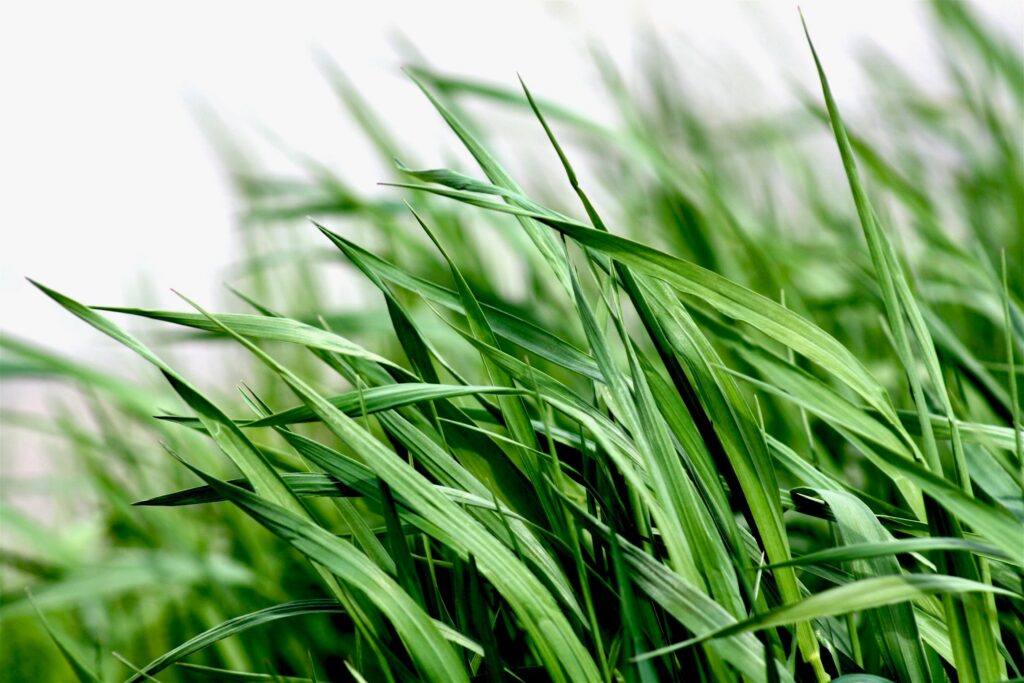
Let’s look at the issues that arise when the grass is allowed to grow too long before we talk about how to mow long grass. If you wait a long time between mowings, the grass may go to seed, at which point the blades of the grass will look more like weeds than grass.
Your mower could become overwhelmed by long grass, which would also cause its blades to wear out more quickly.
The leftover grass clippings from cutting tall grass are also bigger, and the volume of clippings produced is greater, making management more challenging.
Not only that, but the long grass clippings are more likely to remain on the top of the lawn, where they prevent sunlight from reaching the turfgrass, which is detrimental to the grass’s health.
Similarly, tallgrass is ugly because the blades of the grass grow at random and inconsistent at heights, which contributes to the unkempt appearance of your lawn.
It makes it more difficult for the grass to hold itself up, and if it falls on the grass around it. Furthermore, the presence of long grass not only encourages the growth of fungi and other pathogens but also causes moisture to become trapped in the lawn’s lowest sections.
This causes the grass to grow unevenly and may make your lawn look rugged.
Do Not Cut Tall Grass Too Short At Once!
When you cut the long grass all at once, the turf is exposed to the sun’s direct heat, and it dries out quickly.
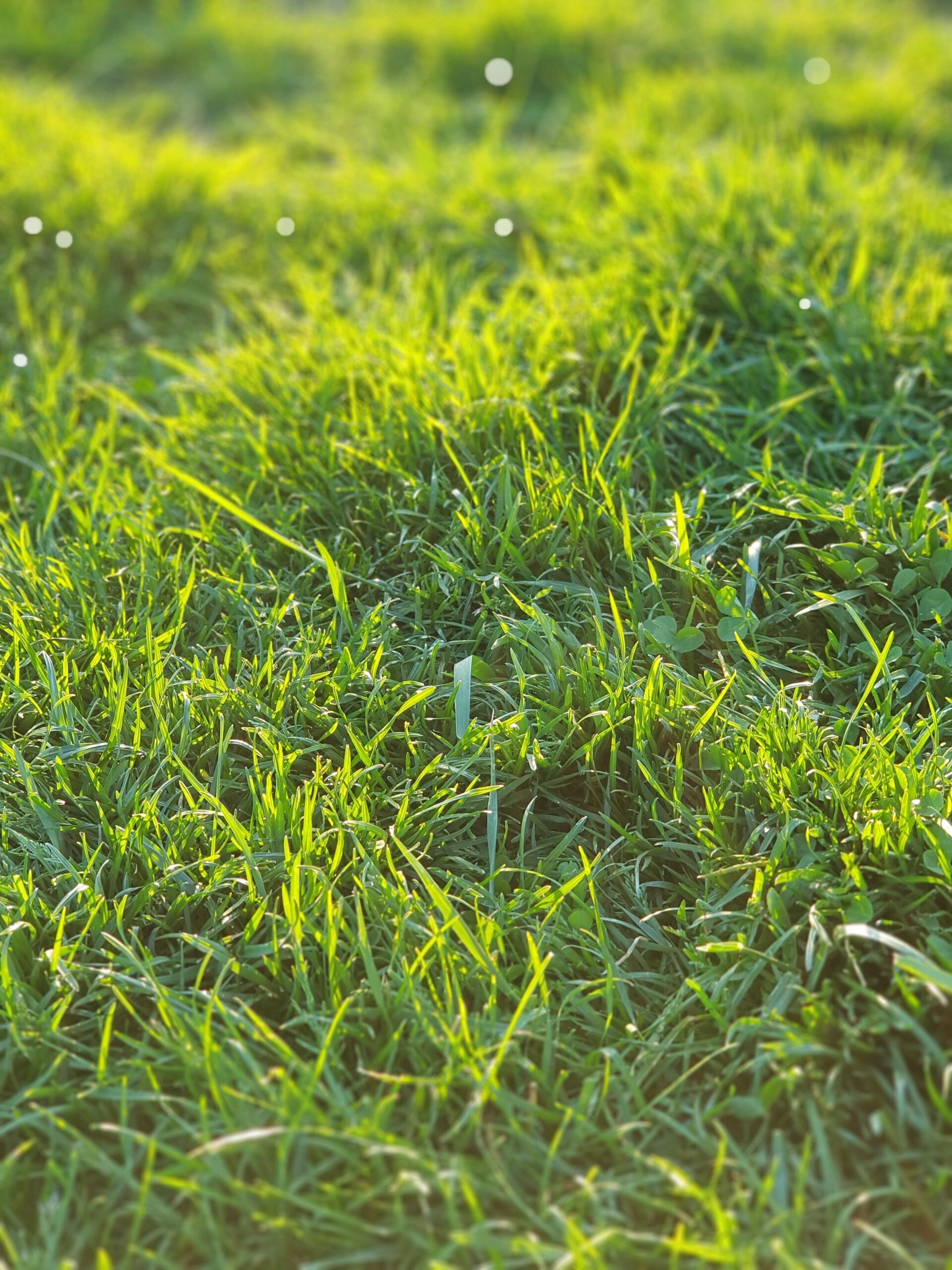
It is recommended that you cut your overgrown grass in parts rather than all at once. You might do more harm than good if you attempt to cut your lawn in one pass.
Your lawn becomes more susceptible to the effects of temperature stress, weeds, and diseases when you mow it excessively at once. In addition, cutting the long grass to an inappropriate length exposes the grass to direct heat, causing it to dry up more quickly, particularly during the summer months. Therefore, additional care for the lawn is required, and it must be watered frequently to safeguard it from the effects of drought.
In addition, grass that has been cut too short has a difficult time fending off invaders and is more likely to fall victim to diseases, weeds, and pests. In addition, the surface area of the leaves is diminished when the grass is cut too short. Leaves are where the grass makes its own food, which the roots draw from as they expand.
If it is cut too short, the roots will weaken, and they will be less able to withstand rain and drought. All in all, when the grass is cut too short, fewer leaves are available for photosynthesis, leading to the grass becoming unhealthy.
The Ultimate Guide To Mowing Tall Grass
Depending on how overgrown your grass is, you may need to schedule multiple mowings throughout the month. In addition, mowing overgrown grass is a task that is easiest to accomplish when the weather is on your side.
Days with clear skies and comfortable temperatures are ideal for such outdoor activities.
Moreover, trimming your lawn when it is dry lowers the risk of pathogens like germs and diseases, establishing a foothold in your lawn. But, again, do not cut the grass too short all at once, so make the initial cut at a height roughly half as long as the grass is now.
Your grass could suffer from shock if you cut off too much of it too quickly.
Nevertheless, here is how to do it:
Task 1: Cutting Tall Grass To A Mowable Height
Your lawn mower won’t be able to mow extremely tall grass, so you’ll have to do it manually.

As the saying goes, “Rome wasn’t built in a day,” and neither will this task.
So, before you begin with the “Mission Possible,” keep in mind that you should just trim the top layer of your unkempt grass to a more manageable or mowing-friendly level, and you should save the remainder of the cuts for a later time.
However, before we go any further and tell you how you may accomplish this, here are some of the tools that will be necessary for the task at hand:
Rake: A rake is required to collect the cut grass from the strimmer and mower.
Lawn Mower: When ready, you’ll need a lawn mower to cut your overgrown lawn.
String/Blade Trimmer: You can use either, as long as it has sharp blades or a fresh string.
Safety Clothes: You need safety gear. Footwear to goggles, safety must always come first.
Since we now have all of the necessary items, we can, at last, begin our detailed advice on the most effective technique to trim excessively long grass.
So, without further ado, let’s get the ball rolling here, shall we?
Step 1
You first need to get out the strimmer and trim roughly a third of the length of your lawn. You’ll need to wait a few days after this before moving ahead.
You can begin trimming the grass once you have positioned yourself appropriately, acquired the necessary safety equipment, ensured that there is no debris in your garden, and moved your children and/or animals out of the way.
Step 2
After two days, pull out your strimmer again to cut a similar amount of height off your grass as the initial round. When you finish this, you won’t have anything else to worry about for a while. You’ll need to wait about a week to perform the next task.
Step 3
This may seem challenging and illogical, but please put your trust in us. After receiving such aggressive cutting, your lawn will require some time to recover before being mowed again. Wait approximately one week before moving on to the next phase in the process.
Step 4
At this point, you should be able to use your lawn mower to cut any residual grass that is there. First, however, take frequent breaks to prevent the machine from overheating.
Step 5
After you have finished doing all of that, you need to go out your rake and gather the cut grass, which you may later use as mulch if you so choose. However, if that is not something you want, ensure that the grass cuttings are disposed of properly.
Task 2: Mowing The Tall Grass
If the grass is damp, you should wait several days until it is totally dry before you begin mowing it.
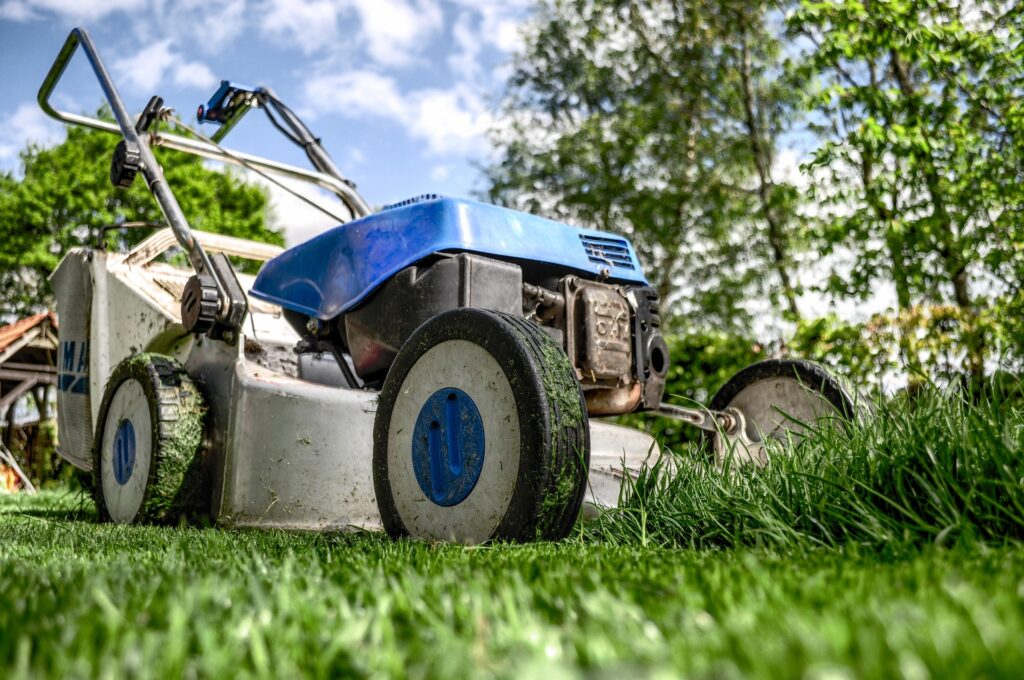
As you mow, you’ll be able to gradually reduce the height of the grass to where you want it. Mowing a lawn that has been cut short will make the process much simpler for you, despite the fact that you will still need to put in a lot of effort.
You may also need to alter the height setting on your mower, which is often between 4 and 6 inches, although this may depend on your mower model. A word of caution: do not attempt to mow your lawn while the grass is still wet.
This will not only make it more difficult to chop down, but it will also prevent your mower from functioning correctly. So, if the lawn is wet, you should wait a few days until it is totally dry before you begin mowing it. (Well, we did warn you that it would take time)
Step 1
Be cautioned that this will be a difficult chore that will take a long time because the mower may have trouble cutting through the long grass. So, if the machine ever stops working, check the blade region for debris and clean it out.
Nevertheless, after raising the cutting height of the mower to its maximum position, you should make the first pass to cut the grass shorter. Following that, go get yourself something cold to drink, and give yourself a moment to relax.
Step 2
After you have completed the first pass and the grass has been cut to a height that is easier to manage. Adjust the setting on your lawn mower and decrease the blade height even further down before making a second pass through the area.
Step 3
Take your time and wipe out the blade like you did the first time. If you don’t do that, your mower won’t cut the grass as it should. Following that, leave the lawn alone once again for the next three to five days so that it can recuperate.
Step 4
After a few days have passed, it is time to make the third pass to get the grass to its desired final height. Again, mowing height should be the standard setting of 2 to 3 inches.
One last pass over the lawn will ensure a smooth, uniform surface. But before you finish up and put away your tools, you should pick up the grass cuttings in the yard.
Step 5
If you have a large yard, a leaf blower is the most effective way to get rid of the grass clippings that have accumulated. For smaller lawns, a broom will do the trick. The cleaning process may take an entire day, so you may want to put it off until the next day.
Some Tips For Tackling Your Overgrown Lawn
Mowers and strimmers can overheat, so take breaks when mowing an overgrown lawn.
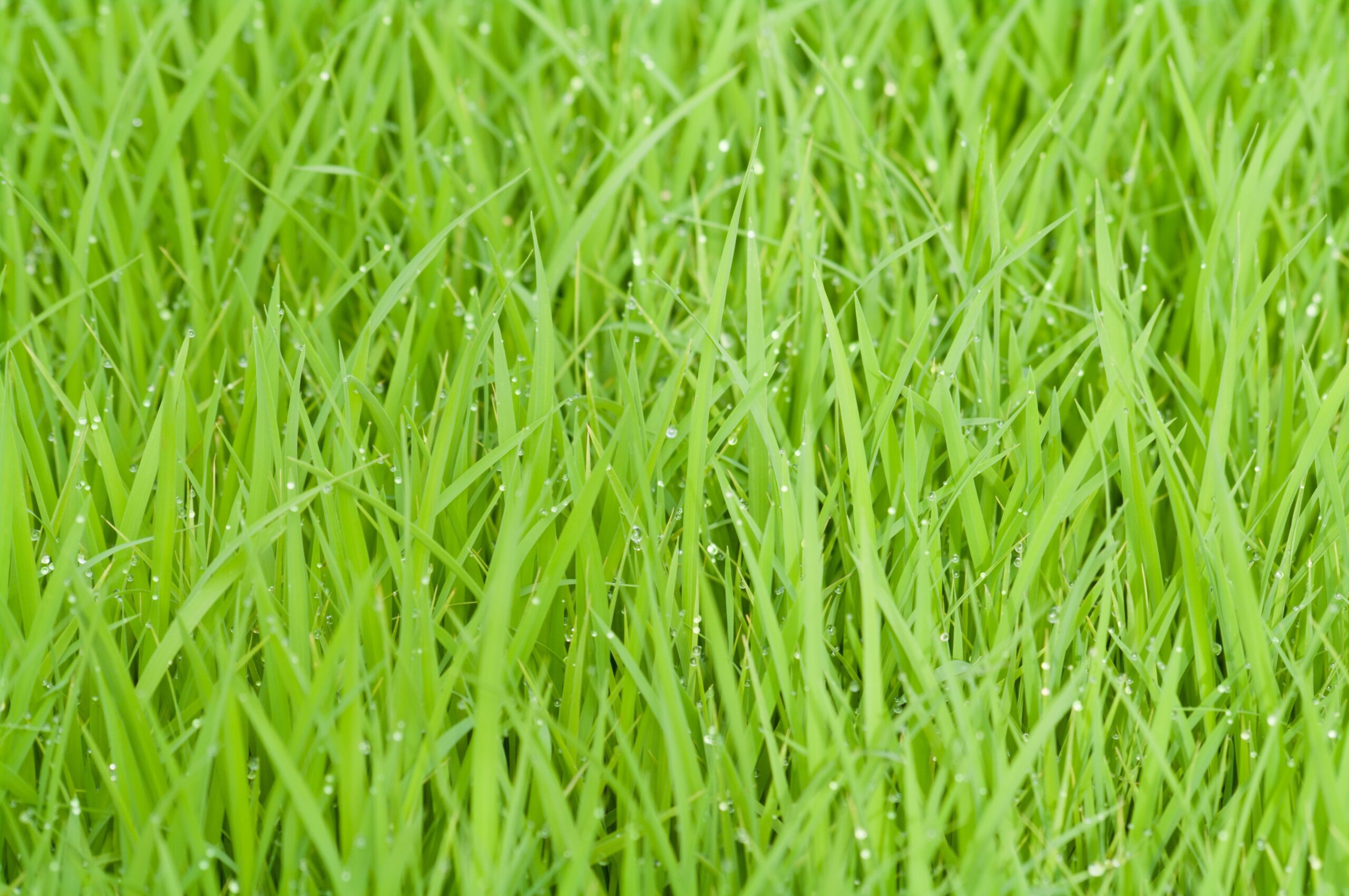
It is always beneficial to seek expert opinion. That is why we have compiled many tips that, when followed, will make it possible for you to make quick work of the overgrown grass.
Pick The Right Time
As a general rule, you should avoid trimming your overgrown lawn throughout the winter months. The strain of routine pruning performed throughout the cold season might be detrimental to the grass’s ability to recuperate. The weather in the spring is perfect for planting new seeds. You might, however, put off cutting your lawn until the summer.
Take Breaks
When you start mowing the lawn for the first time, you are going to feel fatigued and overwhelmed. This is an expectation. Nevertheless, you should make an effort to keep a level head and a relaxed state throughout the process by taking several short breaks.
Also, mowing or trimming an overgrown lawn can easily cause your lawn mower or string trimmer to overheat. So, taking breaks is essential!
Keep Children & Pets Away
If there are children or animals in the area when you are mowing, then there is a risk that they could sustain serious injuries from the blades of your mower.
So, during the time that you are mowing the lawn, it is imperative that you relocate your children and animals to a secure location. The very last thing you want is for your mower to run into anybody or something by accident.
Furthermore, when mowing tall grass, you should watch out for animals in your yard, such as snakes and moles.
Check The Lawn For Debris
Before you begin cutting the grass, you should inspect the area to ensure that it is clear of any obstacles, such as rocks, branches, or dog droppings.
The portion of the grass that needs a trimming, needs to be clear of any debris, including tree branches, rocks, and anything else that might be in the way. In that case, the equipment you use to cut the grass would suffer damage.
RELATED: The Correct Way To Cut Lawn Edges | A Comprehensive Guide
Wear Protective Gear
It is imperative that you make sure that you are outfitted with the appropriate protection gear in order to guarantee your personal safety. So, when operating the mower and the strimmer, you should always wear protective equipment, such as gloves, safety glasses, rubber boots, a long-sleeved shirt, long pants, and ear protection. All of this is to shield you from any accidents that might occur while you are mowing the grass in the yard.
Use A Sharp Blade
Before you begin working on your lawn, you will need to ensure that all of your tools are in excellent working order regardless of the strategy you have in mind for addressing it.
Therefore, you need to check that the blades on your mower and scythe are sharp and in good functioning order. If you have a gas-powered mower, give the engine a good tune-up so that it is ready for the demanding work that lies ahead.
Final Thoughts
There you have it; a method for mowing down tall grass. It is not difficult; in the near run, you will merely need to mow a smaller area more frequently.
If the grass has become matted down, you should rake the lawn before you trim it to stand it up, and you should use a rotary mower with four wheels.
This is one of the primary reasons I keep various lawn mowers in my garage. However, renting a rotary mower won’t break the bank if you don’t already possess one.
Frequently Asked Questions (FAQs)
What is the best way to cut very tall grass?
If you want to avoid problems with your lawn mower, the most effective method for cutting really long grass is to space out the cutting and mowing operation across a number of days. Also, before you mow your lawn, use a string trimmer or weed eater to reduce the height of the grass to a level that is easier to work with.
What do you do when your grass is too long?
If your grass is too long, you should first trim it with a weed eater, using a thick.080 or.0.95 trimmer line or blade, and only then should you mow it. Taking off the top few centimeters of grass using a grass trimmer or a scythe will make it much easier to mow later on.
Will a strimmer cut long grass?
Yes. Using a strimmer, provided that it is a gas-powered strimmer, is an effective way to reduce the length of the grass to a more manageable size. You can keep your lawn in check and stop it from becoming a mini-forest when you get the hang of utilizing a strimmer.
Is it ok to let the grass grow long?
It is best to avoid letting the it grow to its full length. A height greater than three inches is troublesome for the majority of grasses. In addition, it becomes challenging for lthis to support itself after it reaches this height and beyond.
This causes it to droop over the grass around it, suffocating it in the process.
What happens to grass if you don’t cut it?
When one allows it to grow unchecked, it can suffocate itself by blocking off light needed by the roots and soil. This will not only make your grass look unkempt, but it could also kill off some of it. Also, the grass will ultimately flower, lose its strength, and be overrun by weeds. Then, it will die, leaving you with a weedy yard.
Sources for Further Reading
Mowing practices for healthy lawns. The University of Minnesota Extension. (2022). Retrieved 20 October 2022, from https://extension.umn.edu/lawncare/mowing-practices-healthy-lawns
Cutting the Tall Grass. Harvard University Graduate School of Design. (2022). Retrieved 20 October 2022, from https://www.gsd.harvard.edu/project/cutting-the-tall-grass/
Mowing or Grasscycling – Lawns | University of Maryland Extension. (2022). Retrieved 20 October 2022, from https://extension.umd.edu/resource/mowing-or-grasscycling-lawns
Editor’s Recommendation:
When And How To Fertilize Your Vegetable Garden For The Best Results?
Is Bermuda Grass A Weed? and How To Kill Bermuda Grass Naturally!
Orange Mushrooms In The Yard? Here Is How To Get Rid Of Them!







